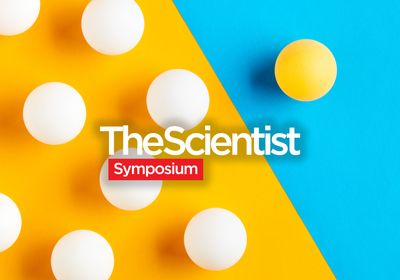ABOVE: JEAN LACHAT UCHICAGO CREATIVE
Alex Muir never thought he would become a cell biologist. Instead, when he enrolled in the University of Chicago as an undergraduate in 2006, he was set on becoming an archaeologist. His parents were history buffs, and he fondly remembers sitting on the couch eating gelato and watching the History Channel with his dad. But at the end of his sophomore year, Ilaria Rebay, a cell and molecular biologist at the university, presented him with an opportunity for a summer job in her lab and he said yes.
Rebay’s team had recently discovered a new Drosophila transcription factor involved in eye development that was also a phosphatase, but they didn’t know if or how the two functions were related. Muir was tasked with finding the protein’s substrates. As an undergrad without much of a science background, he now says he didn’t have a prayer of completing the project, but he was hooked by the opportunity to ask big picture questions and “the freedom to explore ideas.” He continued to the University of California, Berkeley, where in 2010, he joined Jeremy Thorner’s lab to pursue a doctorate in biochemistry, biophysics, and structural biology.
There, Muir studied the signaling pathways that eukaryotic cells turn on to cope with mechanical challenges. Thorner had discovered a group of yeast cell kinases called Ypk1 that respond to excessive membrane compression or stretch, and Muir developed a genetic screen to pinpoint the kinase’s substrates (eLife 3:e03779, 2014). Of the potential hits the screen identified, Muir found that two are essential to cell survival in times of stress. They form part of an enzyme complex called ceramide synthase, which produces a family of waxy lipid molecules that get deposited to the membrane to recover membrane tension.
Later in his time as a graduate student, as he was exploring his next steps, Muir took a class on metabolism that spurred his interest in the area. “It felt like a lot of the old paradigms [in the field of metabolism] were changing, and that seemed really, really fascinating to me,” he says. Wanting to move into more translational research, he joined molecular biologist Matthew Vander Heiden’s lab at MIT’s Koch Institute for Integrative Cancer Research as a postdoc in 2016.
Vander Heiden’s lab, which studies tumor metabolism, was wrestling with a puzzling discovery. The dogma in the field up to that point, based purely on results from in vitro studies, was that tumor cells consume glutamine. But Vander Heiden’s research had shown that when the same cells were transferred to a mouse, they stopped metabolizing glutamine. “Clearly, [if you’re a tumor] there’s something about having physiology around you that changes your metabolism. All of those glutamine metabolic pathways don’t become as important,” Muir explains. So he set out to study what exactly cancer cells consume in vivo.
He and his colleagues began by developing a new technique that combined mass spectrometry and RNA-seq to measure the components of the interstitial fluid surrounding lung and pancreas tumors in mice (eLife 8:e44235, 2019). The method allowed them to compare the relative levels of nutrients and gene expression among samples. They found that nutrients around tumors differ from those throughout the body, and that animal diet, tumor type, and tumor location affects these nutrients.
“He had a ton of impact. I probably get [the most] collaboration requests still today to go and help isolate what nutrients are available in various biological fluids,” says Vander Heiden.
“Alex is one of the most thoughtful people that I’ve ever worked with,” says Mark Sullivan, a postdoctoral researcher who worked alongside Muir as a PhD student in Vander Heiden’s lab. “He thinks deeply about everything,” Sullivan says, including “How should we go about science? How should we go about mentorship?”
In 2019, Muir joined the University of Chicago as an assistant professor. His team researches what nutrients cancers consume and which metabolic pathways and genes they use to consume them. Muir describes this as figuring out what’s typically on the “menu” for pancreatic cancer cells and how these molecules either promote or inhibit growth. Currently, he’s particularly interested in the role of the amino acid arginine, which is almost completely depleted in the microenvironment of pancreatic cancers in mice. Muir’s team investigates how cancer learns to live without arginine, how its absence affects cancer metabolism, and whether the affected cellular pathways can be exploited to combat tumors.
“Alex is a very special individual,” Vander Heiden says. “I think he’s going to do really great things in his career.”





